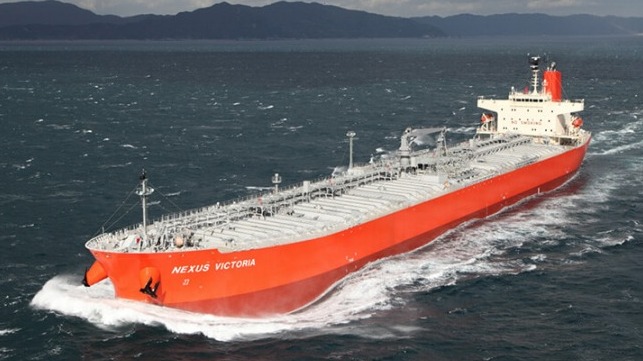MOL Plans First Japanese Installation of Carbon Capture/Scrubber System

Mitsui O.S.K. Lines has decided to equip one of its LR1 product tankers with a combination system that both captures a portion of the CO2 emissions from the exhaust as well as acts as a SOx scrubber. The system, which is being supplied by the Netherlands-based Value Maritime, will be the first commercial installation of a CO2 capture system on a Japanese vessel as well as the first LR1 tanker and largest vessel to employ the Filtree System.
The installation will take before the end of 2024 on the 2015-built tanker Nexus Victoria. Registered in the Isle of Man, the vessel is a 74,900 dwt tanker managed by Synergy Maritime. It was built in Japan and runs with a single two-stroke six-cylinder diesel engine from Mitsui Engineering.
A 15 MW Filtree system was selected for the vessel that will capture the CO2 from the exhaust by spraying an amine-based solution. It is expected to recover up to 10 percent of CO2 from the exhaust emission. The CO2 remains suspended in the solution which is stored in tanks on the vessel and offloaded in port. It can be recaptured from a heating process and then MOL reports supplied to greenhouses, synthetic fuel companies, and other end users. The amine solution can be reused on the vessel.
“This system is noteworthy as an initiative to promote decarbonization of existing vessels, which are difficult to convert to next-generation fuels,” said Hiroyoshi Kubo, Executive Officer for the Tanker Unit of MOL.
In addition to the carbon capture the system also performs a more traditional role as a SOx scrubber. MOL expects it will remove 99 percent of sulfur oxides and particulate matter contained in the exhaust.
Laurens Visser, Commercial Manager for Value Maritime remarked, “Hopefully this is the first of many Japanese clients that we can support in achieving decarbonization initiatives.”
MOL and Value Maritime report they will continue working toward the realization of a carbon-neutral society by reducing GHG emissions from vessels and building a CO2 capture value chain. Value Maritime plans to also collaborate further with other product tanker companies in the Asian market and further expand its carbon logistics services onshore in the region.
Value Maritime launched a sister company, Value Carbon, which is designed to offer clients end-to-end solutions. The focus is on locations where captured carbon is best handled, like bunker ports says the company, and helping to realize the most efficient way to utilize the carbon at the lowest cost per tonne. They look to address issues such as those outlined in a recent report commissioned by Singapore’s Global Centre for Maritime Decarbonization in collaboration with Lloyd’s Register and ARUP, that found a critical need to define a clear pathway to offload, utilize, and/or store CO2. The lack of port infrastructure was cited as a major hurdle for CO2 capture aboard ships.
Eastern Pacific Shipping in February 2023 installed onboard its MR tanker Pacific Cobalt a first-of-its-kind fully integrated carbon capture solution developed by Value Maritime. At the time they reported the system would be capable of capturing up to 40 percent of CO2 emissions from the vessel’s main and auxiliary engines as well as 99 percent of SOx emissions. Ardmore Shipping in September 2023 also began fitting the first of nine systems aboard its tankers at a shipyard in China.
After initially believing carbon capture would be best for land-based emitters, the shipping industry is showing increasing interest in the technology. It could become a key tool in addressing the emissions of the in-service fleet extending the life and financial performance of these vessels.
